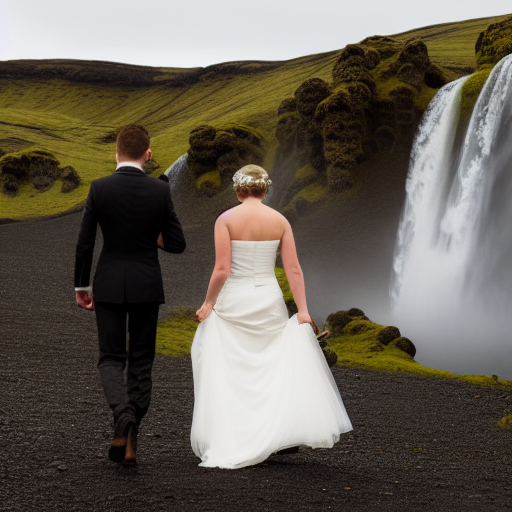wedding photography do’s and don’ts
Wedding photography is more than just capturing beautiful images; it’s about preserving precious moments and telling a love story through the lens. As a wedding photographer, you have the incredible responsibility of creating lasting memories for couples on one of the most important days of their lives. To ensure that you capture the essence of the day and deliver exceptional results, it’s crucial to follow some key do’s and don’ts. In this comprehensive guide, we’ll explore the essential tips and best practices for wedding photography.
Table of Contents
- Meeting with the Couple
- Taking Charge
- Capturing the Details
- Being Prepared
- Creating a Shot List
- Scouting the Venue
- Capturing Candid Moments
- Mastering Lighting Conditions
- The Don’ts of Wedding Photography
- Conclusion
Let’s dive into each of these aspects and discover how you can elevate your wedding photography skills to create stunning and meaningful images.
1. Meeting with the Couple
Before the wedding day, it’s essential to meet with the couple to understand their vision and expectations. This initial consultation allows you to establish a rapport and build trust, making the couple feel comfortable in front of the camera. During this meeting, discuss the timeline, specific shots they desire, and any family dynamics that may impact the photography. By aligning your goals with the couple’s vision, you can create a customized approach that captures their unique story and personalities.
2. Taking Charge
As the wedding photographer, it’s your responsibility to take charge and direct the couple and their guests during the photo shoot. While being respectful of their preferences, provide guidance and suggestions to capture the best shots possible. Take control of the situation while maintaining a positive and relaxed atmosphere. Remember, confidence and clear communication will help put everyone at ease and result in more natural and authentic photographs.
3. Capturing the Details
In addition to capturing the couple’s love and emotions, pay attention to the smaller details that make the day unique. From the wedding rings and floral arrangements to the carefully chosen decor, these details hold sentimental value for the couple. Take close-up shots of these elements to create a comprehensive narrative that tells the story of the day. By focusing on the details, you can create a visually rich and captivating wedding album.
4. Being Prepared
Weddings are unpredictable, and as a photographer, you need to be prepared for any situation. Pack essential backup equipment, including extra batteries, memory cards, and lenses, to avoid any technical mishaps. Familiarize yourself with the venue beforehand, scouting out potential photo opportunities and understanding the lighting conditions. By being prepared, you can adapt to different scenarios and ensure that you capture the best possible images throughout the day.
5. Creating a Shot List
Collaborate with the couple to create a comprehensive shot list that includes must-have moments and key family members or friends they want to be captured. This ensures that you capture all the essential elements of the wedding and avoid missing any significant shots. However, while a shot list provides guidance, don’t be afraid to be spontaneous and capture candid moments that unfold naturally. The shot list should serve as a helpful reference, not a restrictive script.
6. Scouting the Venue
Before the wedding day, visit the venue to familiarize yourself with the layout, lighting conditions, and potential photo locations. Take note of areas with the best natural light, unique architectural features, or picturesque landscapes. This preparation allows you to plan your shots in advance, ensuring that you make the most of the venue’s unique characteristics. By exploring the venue, you can also anticipate any challenges or opportunities that may arise during the shoot.
7. Capturing Candid Moments
While posed shots are an essential part of wedding photography, candid moments often convey the most genuine emotions. Be observant and ready to capture spontaneous interactions, laughter, tears, and expressions of joy. These candid shots add depth and authenticity to the wedding album, allowing the couple to relive the genuine emotions experienced on their special day. Keep your camera ready and anticipate these fleeting moments to create truly memorable photographs.
8. Mastering Lighting Conditions
Weddings can take place in various lighting environments, from bright outdoor settings to dimly lit indoor venues. As a wedding photographer, it’s crucial to be equipped with suitable gear and techniques to adapt to different lighting situations. Understand how to work with natural light, using it to create soft and flattering portraits. Additionally, be proficient in artificial lighting techniques, such as using off-camera flash or reflectors, to balance and enhance the lighting when necessary.
9. The Don’ts of Wedding Photography
While knowing what to do is essential, understanding what not to do is equally important. Here are some key don’ts to keep in mind during the wedding photography process:
- Don’t overshoot: Avoid continuously clicking the shutter in hopes of capturing every moment. Focus on capturing meaningful and well-composed shots, prioritizing quality over quantity.
- Don’t be intrusive: Respect the intimacy of intimate moments, such as the ceremony or private conversations. Maintain a respectful distance and use zoom lenses to preserve privacy.
- Don’t rely solely on post-processing: Strive to capture the best possible shots in-camera, minimizing the need for excessive editing. Aim for a timeless and authentic representation of the day.
- Don’t neglect communication: Effective communication with the couple, wedding planner, and other vendors is crucial for a smooth workflow. Clarify timelines, shot expectations, and any changes that may arise to avoid misunderstandings.
wedding photography do’s and don’ts SUM UP
Wedding photography is an art that requires technical skill, creativity, and a deep understanding of the couple’s vision. By following these do’s and don’ts, you can elevate your wedding photography game and create stunning images that capture the essence of the day. Remember, it’s not just about taking pictures; it’s about telling a love story through your lens. Embrace the responsibility, be prepared, and let your passion for photography shine through in every shot.





